Ditapis dengan
E-book Invited to Witness : Solidarity Tourism across Occupied Palestine
“They called me a tourist, which I found insulting.” So began a reflection by a delegate I interviewed who had gone on solidarity tours to Palestine during the first intifada. She grappled with her discomfort in occupying this term: tourist. She outlined her rationale, explaining that the designation tourism, attached to what she did in Palestine, felt derisive of her work, as though it was…
- Edisi
- -
- ISBN/ISSN
- 9781478093046
- Deskripsi Fisik
- 345 hlm
- Judul Seri
- -
- No. Panggil
- 306.4 LYN i
E-book Bishops in Flight : Exile and Displacement in Late Antiquity
With the arrival of a so-called Christian emperor, Constantine the Great, Christian leaders gained the long-awaited tolerance of the empire. Christianity’s transition into the favored religious cult of the imperial household and Roman elite involved significant growing pains. The road to conformity was anything but smooth, as a series of controversial ecumenical councils demonstrated. I…
- Edisi
- -
- ISBN/ISSN
- 978052030037
- Deskripsi Fisik
- 224 hlm
- Judul Seri
- -
- No. Panggil
- 201 BAR b
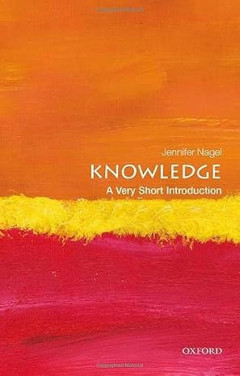
E-book Knowledge: A Very Short Introduction
What is knowledge? How does it differ from mere belief? Do you need to be able to justify a claim in order to count as knowing it? How can we know that the outer world is real and not a dream? Questions like these are ancient ones, and the branch of philosophy dedicated to answering them - epistemology - has been active for thousands of years. In this thought-provoking Very Short Introductio…
- Edisi
- -
- ISBN/ISSN
- 9780199661268
- Deskripsi Fisik
- 190 halaman
- Judul Seri
- -
- No. Panggil
- 001.0 NAG k
E-book At War with Women : Military Humanitarianism and Imperial Feminism in …
n a large cement building on a remote part of Camp Atterbury army base in south-central Indiana, a group of US soldiers prepares to visit a mock Afghan village. The village, part of a simulation, is populated by privately contracted role players acting as Afghan farmers, merchants, religious figures, elders, and other villagers. As part of their predeployment training, the soldiers will survey…
- Edisi
- -
- ISBN/ISSN
- 9781501767760
- Deskripsi Fisik
- 282 hlm
- Judul Seri
- -
- No. Panggil
- 301 GRE a
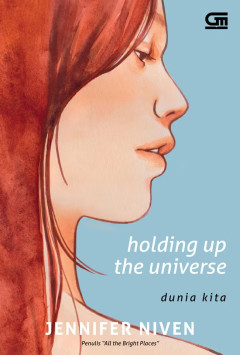
E-Book Holding up the Universe (Dunia Kita)
Semua orang mengira kenal Libby Strout, cewek yang pernah dijuluki "Remaja Paling Gemuk se-Amerika". Namun tak ada yang tahu siapa dia sebenarnya. Setelah kematian ibunya, Libby mengurung diri. Tetapi, sekarang Libby siap: menyambut SMA, teman-teman baru, cinta, dan SEMUA KESEMPATAN DALAM HIDUP. Semua orang juga mengira kenal Jack Masselin. Cowok itu sangat percaya diri, bisa bergaul dengan si…
- Edisi
- Cet. 1
- ISBN/ISSN
- 9786020377964
- Deskripsi Fisik
- 496 hlm; 3 mb
- Judul Seri
- -
- No. Panggil
- 823 NIV h
E-book Reconciling Rwanda : Unity, Nationality and State Control
Rwanda is a small land-locked country in the Great Lakes Region of central Africa. Bordering Burundi, Uganda, Tanzania and Democratic Republic of Congo (DRC) (see image 1 below), it is the most densely populated country in sub-Saharan Africa with a population of 12 million in July 2015.1 The Rwandan Patriotic Front (RPF) won the parliamentary election in 2003 and continues…
- Edisi
- -
- ISBN/ISSN
- 9781912250400
- Deskripsi Fisik
- 234 hlm
- Judul Seri
- -
- No. Panggil
- 364.15167571 MEL r
E-book Road to Net Zero : Strategic Pathways for Sustainability-Driven Busine…
This book is the outcome of a joint experiment—an experimental exercise in university–industry relationship building between our institutions: BMW and Friedrich-Alexander-Universität (FAU). To be sure, our institutions have always had good and trusting relationships between individual experts—long before our time in leadership roles. People at BMW and FAU have been in…
- Edisi
- -
- ISBN/ISSN
- 9783031422249
- Deskripsi Fisik
- 306 hlm
- Judul Seri
- -
- No. Panggil
- 670 ADO r
E-book Ableism in Academia : Theorising experiences of disabilities and chron…
In the contemporary context of social rights and activist movements such as those associated with combatting sexual harassment, gun and knife crime or climate change, we can observe a typical pattern of public responses. These movements offer voices to those who are marginalised, and indeed provide the confidence needed for many people to stand up for specific issues. This, …
- Edisi
- -
- ISBN/ISSN
- 9781787354975
- Deskripsi Fisik
- 263 hlm
- Judul Seri
- -
- No. Panggil
- 305.908 BRO a
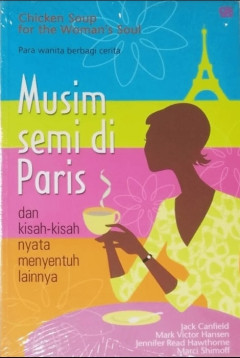
Chicken Soup for the Woman's Soul: Musim Semi di Paris
Ada banyak cara untuk melukiskan seorang wanita: seorang anak, ibu, nenek, istri, pacar, wanita karier, sahabat, murid, guru, bos. Tetapi, persamaan yang tak bisa dilepaskan dari para wanita ini adalah: mereka memiliki hati untuk merasakan kelembutan cinta, menempa persahabatan seumur hidup, mengejar karier yang dipilih, membentuk kehidupan baru, bertanggung jawab tanpa kenal lelah atas pekerja…
- Edisi
- Cet. 2
- ISBN/ISSN
- 9792226117
- Deskripsi Fisik
- xii, 208 hlm; 15 x 23 cm
- Judul Seri
- Chicken Soup for the Woman's Soul
- No. Panggil
- 155.25 CAN c
E-book The Creighton Century, 1907-2007
The first Creighton Lecture took place on 4 October 1907, almost seven years after the death of the scholar and bishop whom it honoured. Apart from being delivered by a lifelong friend, its published version stands in no discernible relation to Mandell Creighton himself, except for treating of his narrower patria, the Anglo-Scottish border. In fact the whole subsequent lect…
- Edisi
- -
- ISBN/ISSN
- 9781912702749
- Deskripsi Fisik
- 338 hlm
- Judul Seri
- -
- No. Panggil
- 907 BAT t
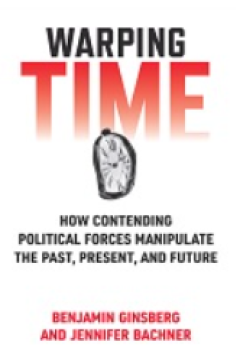
E-book Warping Time : How Contending Political Forces Manipulate the Past, Pr…
In a 2017 speech, Virginia governor Terry McAuliffe declared that the Confederate monuments should be removed because they helped to keep racism alive in present-day institutions and attitudes. President Donald Trump, for his part, argued that those attempting to remove the monu-ments were seeking to rewrite history in order to remove all traces of ideas with whi…
- Edisi
- -
- ISBN/ISSN
- 9780472903344
- Deskripsi Fisik
- 159 hlm
- Judul Seri
- -
- No. Panggil
- 320 GIN w

E-book Across the Copperbelt : Urban & Social Change in Central Africa's Bord…
With a roller coaster history of economic boom followed by crushing bust, the Central African Copperbelt has come to epitomise Africa’s faltering ‘Industrial Revolution’.1 Throughout the twentieth century, its large-scale industrial copper mines attracted people, capital and power across national and continental boundaries. Following a protracted period of expansion after 1945,…
- Edisi
- -
- ISBN/ISSN
- 9781847012661
- Deskripsi Fisik
- 437 hlm
- Judul Seri
- -
- No. Panggil
- 669.36 BLA a
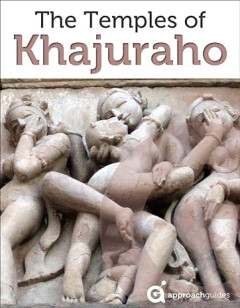
E-book The Temples of Khajuraho
The magnificent 10th-12th century Hindu temples of Khajuraho — with their soaring towers and engaging sculptures — represent the pinnacle of the North Indian temple style. Still infused with their historical magic, they are yours to discover.
- Edisi
- -
- ISBN/ISSN
- -
- Deskripsi Fisik
- 26 halaman
- Judul Seri
- -
- No. Panggil
- 934 APP t
E-book The Laboratory Guinea Pig
Guinea pigs hold a place in human history that predates the European acquaintance with this small mammal. Long before guinea pigs, or cavies, became synonymous with research subject, humans valued this animal as an important food source. To this day guinea pigs are considered a delicacy in many areas of South America, where domes-tic guinea pigs are allowed to roam and scavenge in and around th…
- Edisi
- 2nd ed.
- ISBN/ISSN
- 9781439835562
- Deskripsi Fisik
- 177 hlm
- Judul Seri
- -
- No. Panggil
- 599.6 CLE t
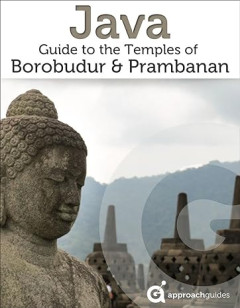
E-book Java: Guide to The Temples of Borobudur & Prambanan
Java is home to two of the most impressive temples in all of southeast Asia: Buddhist Borobudur and Hindu Prambanan. Borobudur (built 760-830) rises gradually in a series of majestic tiers, a testament to its stupa-mound inspiration; while Prambanan (built 850-856) soars vertically, drawing on south Indian temple prototypes. Both inspire with their innovative architectural designs, world-class …
- Edisi
- -
- ISBN/ISSN
- -
- Deskripsi Fisik
- 54 halaman
- Judul Seri
- -
- No. Panggil
- 722.4 APP j
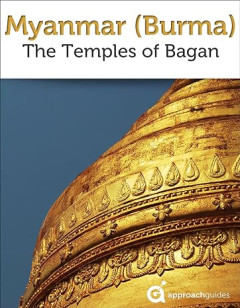
E-book Myanmar (Burma): The Temples of Bagan
Bagan, the ancient Buddhist capital in central Myanmar (Burma) that thrived from 850-1300, is one of the most magnificent and inspiring sites in Southeast Asia. It is yours to uncover.
- Edisi
- -
- ISBN/ISSN
- -
- Deskripsi Fisik
- 37 halaman
- Judul Seri
- -
- No. Panggil
- 959.1 APP m

E-book Thailand: Temples of Bangkok, Sukhothai & Ayutthaya
The temples of Thailand — overflowing with golden Buddhas, soaring spires and glistening surfaces of infinite complexity — stir the spirit, inviting contemplation and wonder. This Approach Guide reveals the country’s best art and architecture from its three great historical capitals: Sukhothai (1238-1368), Ayutthaya (1350-1767), and Bangkok (1782-present). It is yours to discover.
- Edisi
- -
- ISBN/ISSN
- -
- Deskripsi Fisik
- 52 halaman
- Judul Seri
- -
- No. Panggil
- 959.3 APP t

E-book Vietnam Revealed: The Royal Tombs of Hue
A fantastic collection of royal tombs sits solemnly along the banks of the Perfume river, upstream of Hue to the southwest. They were built by the Nguyen dynasty — which ruled over a unified Vietnam from 1802-1945 — to maintain their legacy for ages to come. Named a UNESCO World Heritage Site in 1993, the tombs inspire with their perfectly-integrated natural surroundings, captivating dragon…
- Edisi
- -
- ISBN/ISSN
- -
- Deskripsi Fisik
- 46 halaman
- Judul Seri
- -
- No. Panggil
- 959.7 APP v

E-book Cambodia: Temples of Angkor
With insightful profiles for 23 of Angkor's top temples and nearly 200 high-resolution images, this is the definitive travel guide to Angkor, Cambodia's premier World Heritage destination. Angkor — the capital of the Khmer empire that thrived for 500 years from 802-1327 — is one of the most magnificent sites in Southeast Asia. The ancient city’s temples inspire with their innovative ar…
- Edisi
- -
- ISBN/ISSN
- -
- Deskripsi Fisik
- 55 halaman
- Judul Seri
- -
- No. Panggil
- 959.6 APP c
E-book The Afterworld : Long COVID and International Relations
In the spring of 2020, the world came to a halt. Schools, shops, and restaurants closed. Millions of people lost their jobs. Office staffmoved to teleworking while essential workers did double shifts to attend to patients or deliver food. Manufacturing almost stopped. Roads emptied. Airports shut down. This came to be known as the Great Lockdown. The COVID-19 pandemic is the most …
- Edisi
- -
- ISBN/ISSN
- 9780776641485
- Deskripsi Fisik
- 226 hlm
- Judul Seri
- -
- No. Panggil
- 571.98 AMI t
E-book Empty Spaces : Perspectives on Emptiness in Modern History
Emptiness is a challenging concept: slippery in definition and elastic in meaning. It implies a total lack of content: people, buildings, objects or markings on a map. In the abstract, emptiness equals nothingness, a perfect void. Yet when one thinks of places on the globe that one might associate with being empty – the Gobi or Sahara deserts, t…
- Edisi
- -
- ISBN/ISSN
- 9781909646520
- Deskripsi Fisik
- 230 hlm
- Judul Seri
- -
- No. Panggil
- 114 JAM e
E-book True Cost Accounting for Food : Balancing the Scale
Behind all the food that we eat is a vast realm of unaccounted for interactions:the diversion of water from rivers; the extraction of nutrients from soil; thedischarge of pollutants to air and water; the exaction of labor to grow, manage,pick, and package; the release of carbon dioxide to transport and deliver; and soon. When we shine a light on these interactions it becomes clear that a 99¢ha…
- Edisi
- -
- ISBN/ISSN
- 9781003050803
- Deskripsi Fisik
- 317 hlm
- Judul Seri
- -
- No. Panggil
- 338.1 ABO t
E-book Dying in Full Detail : Mortality and Digital Documentary
Dying in Full Detail: Mortality and Digital Documentary will consider the con-sequences of that new practicality, examining documentarians’ recent pursuits of death with equipment that promises to capture its “full detail.” In The Note-books of Malte Laurids Brigge (1910), Rainer Maria Rilke composes the phrase I have appropriated for my title. In context, its meaning refers to a style of…
- Edisi
- -
- ISBN/ISSN
- 9780822373414
- Deskripsi Fisik
- 269 hlm
- Judul Seri
- -
- No. Panggil
- 070.18 MAL d
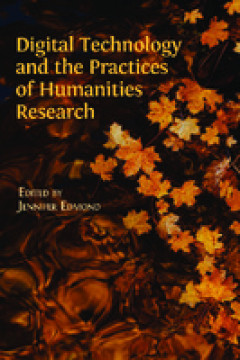
E-book Digital Technology and the Practices of Humanities Research
"How does technology impact research practices in the humanities? How does digitisation shape scholarly identity? How do we negotiate trust in the digital realm? What is scholarship, what forms can it take, and how does it acquire authority? This diverse set of essays demonstrate the importance of asking such questions, bringing together established and emerging scholars from a variety of disci…
- Edisi
- -
- ISBN/ISSN
- 9781783748433
- Deskripsi Fisik
- 297 halaman
- Judul Seri
- -
- No. Panggil
- 001.3 EDM d
E-book The American Short Story Cycle
owever, in their eagerness to have these volumes read and stud-ied, Dunn and Morris miss how formative the short story is to such books, so much so that Rolf Lundén argues for short story com-posite. His study rightly attends to the tensions between unity and fragmentation that distinguish the genre, and he argues that not every such volume features cyclicality …
- Edisi
- -
- ISBN/ISSN
- 9781474423946
- Deskripsi Fisik
- 201 hlm
- Judul Seri
- -
- No. Panggil
- 897 SMI t
E-book Moving Histories : Irish Women’s Emigration to Britain from Independ…
This book looks at the impact women’s migration had on Ireland in the crucial years of initial independence, from the partition of the island and the founding of the Free state to the declaration of a Republic. This period saw Ireland move from internal political instability in the 1920s to a more internationally focused country in the 1950s. However, emi…
- Edisi
- -
- ISBN/ISSN
- 9781786949608
- Deskripsi Fisik
- 296 hlm
- Judul Seri
- -
- No. Panggil
- 941 RED m
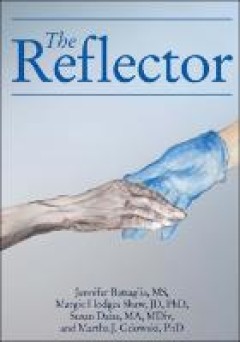
E-Book The Reflector
Incorporates etymology, history, art, drawing, and reflective writing to support medical students in the integration of the science and humanity of anatomy. A comprehensive and holistic understanding of human anatomy is foundational to the care of patients. The Reflector is an innovative and interdisciplinary approach to the learning of human anatomy; it incorporates etymology, history, art, dr…
- Edisi
- -
- ISBN/ISSN
- 9781800102224
- Deskripsi Fisik
- 198 halaman
- Judul Seri
- -
- No. Panggil
- 611 BAT t
E-book Georgette Heyer : History and Historical Fiction
In June 2018, in preparation for writing this chapter, I undertook two distinct searches. The first was of Oxford college and faculty libraries (around 40 in all), using the search tool SOLO (Search Oxford Libraries Online). The second, of local charity shops around Oxford, I undertook on foot. In both I was looking for copies of historical novels by British women writers of the mid-…
- Edisi
- -
- ISBN/ISSN
- 9781787357600
- Deskripsi Fisik
- 320 hlm
- Judul Seri
- -
- No. Panggil
- 807 CLE g
E-book Piracy in World History
Pirates, it is frequently claimed, have existed since the dawn of history, as long as there has been traff ic and commerce at sea.1 Presumably, the origins of piracy would thus be sometime in the pre-historic past, when people f irst took to the sea for commercial purposes, probably around eight thousand years ago, along the coast of the Persian Gulf.2 Historical records over close to three and…
- Edisi
- -
- ISBN/ISSN
- 9789048544950
- Deskripsi Fisik
- 292 hlm
- Judul Seri
- -
- No. Panggil
- 364.163 AMI p

Taste berries for teens : Kisah-kisah remaja tentang hidup, cinta, persahabat…
- Edisi
- cet. 2
- ISBN/ISSN
- 979-686-347-2
- Deskripsi Fisik
- 516 hlm;;13.5 x 20 cm
- Judul Seri
- -
- No. Panggil
- 128 YOU t
- Edisi
- cet. 2
- ISBN/ISSN
- 979-686-347-2
- Deskripsi Fisik
- 516 hlm;;13.5 x 20 cm
- Judul Seri
- -
- No. Panggil
- 128 YOU t

Chicken soup for the single's soul : Kisah-kisah cinta yang memberi semangat …
- Edisi
- cet. 2
- ISBN/ISSN
- 979-686-346-4
- Deskripsi Fisik
- xxiii; 479 hlm;13.5 x 20 cm
- Judul Seri
- -
- No. Panggil
- 152.4 CAN c
- Edisi
- cet. 2
- ISBN/ISSN
- 979-686-346-4
- Deskripsi Fisik
- xxiii; 479 hlm;13.5 x 20 cm
- Judul Seri
- -
- No. Panggil
- 152.4 CAN c

Chicken soup for the woman's soul : Musim semi di paris dan kisah-kisah nyata…
- Edisi
- cet. 1
- ISBN/ISSN
- 978-979-22-2611
- Deskripsi Fisik
- vi; 207 hlm;15 x 23 cm
- Judul Seri
- -
- No. Panggil
- 155.2 CAN c
- Edisi
- cet. 1
- ISBN/ISSN
- 978-979-22-2611
- Deskripsi Fisik
- vi; 207 hlm;15 x 23 cm
- Judul Seri
- -
- No. Panggil
- 155.2 CAN c

Twenty steps to wisdom : Melintasi batas keduniawian, mencapai keseimbangan jiwa
- Edisi
- -
- ISBN/ISSN
- -
- Deskripsi Fisik
- 135 hlm;;11 x 18 cm
- Judul Seri
- -
- No. Panggil
- 128 JAM m
- Edisi
- -
- ISBN/ISSN
- -
- Deskripsi Fisik
- 135 hlm;;11 x 18 cm
- Judul Seri
- -
- No. Panggil
- 128 JAM m

SEGI PRAKTIS FISIOTERAPI
- Edisi
- ed.2 cet. 1
- ISBN/ISSN
- -
- Deskripsi Fisik
- 326 hlm;21 x 13,5 cm
- Judul Seri
- -
- No. Panggil
- 613.2 LEE s
- Edisi
- ed.2 cet. 1
- ISBN/ISSN
- -
- Deskripsi Fisik
- 326 hlm;21 x 13,5 cm
- Judul Seri
- -
- No. Panggil
- 613.2 LEE s
 Karya Umum
Karya Umum  Filsafat
Filsafat  Agama
Agama  Ilmu-ilmu Sosial
Ilmu-ilmu Sosial  Bahasa
Bahasa  Ilmu-ilmu Murni
Ilmu-ilmu Murni  Ilmu-ilmu Terapan
Ilmu-ilmu Terapan  Kesenian, Hiburan, dan Olahraga
Kesenian, Hiburan, dan Olahraga  Kesusastraan
Kesusastraan  Geografi dan Sejarah
Geografi dan Sejarah